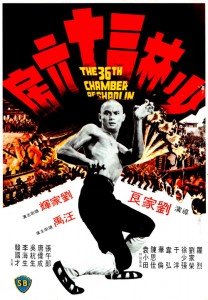
“36th Chamber of Shaolin” Chinese Theatrical Poster
Director: Lau Kar-Leung
Writer: Ni Kuang
Cast: Gordon Liu, Lo Lieh, Lau Kar Wing, Wilson Tong, Wong Yu, Lee Hoi San, Henry Yu, Hon Gwok Choi, Wai Wang, Austin Wai, Aai Dung Gwa, Billy Chan, Peter Chan, Chan Shen, Chan Si Gaai, Cheung Chok Chow
Running Time: 115 min.
By JJ Hatfield
This film is far more than just another Shaolin monk tale. Several things combined to propel this movie into a much loved, oft quoted and frequently ripmaked film. The movie is also known as the Master Killer and Shaolin Master Killer for western audiences. I suppose the marketing geniuses thought the titles needed “killing” to be more lucrative. The translations do a disservice to the cast, crew and the story as it is not a vicious, savage, kill’em all movie.
Many people consider this a turning point for the director Chia-Liang Liu/Lau Kar-Leung as well as the star, Chia Hui Liu/Gordon Liu. “The 36th Chamber of Shaolin” was a breakthrough for the genre as well.
Martial arts movies at the time showed waning interest and both the director and the star could have used a boost to their respective careers. A different sort of film was called for and Kuang Ni did an excellent job with a seemingly simple tale of revenge, train, kick ass. It could have turned into a mediocre affair but Kuang Ni added a touch of humanity that sometimes was lacking in many old school kung fu films.
Chia-Liang Lui has always been known for his intense interest in making films rooted in Chinese history. There are more than a few stories about the revered Shaolin monk, San Te. However it is important to note this movie is not based on literal history, it is a work of fiction.
Kuang Ni is the writer and a very prolific one credited with over two hundred films including Eight Diagram Pole Fighter with Chia-Liang Liu (1984) , Feng Hou (1981), All Men Are Brothers – Guanzhong Luo wrote the novel, Kuang Ni is listed in several places as the sole writer but Chang Cheh is listed by some sources as co – writer. Considering the director of this film he no doubt added his own input.
The film is generally considered by the martial arts world as being one of the most absolute amazing kung fu movies ever made! Unlike many of those films this one deserves the credit.
San Te is a thoughtful young student who becomes increasingly involved in opposition to the Manchu government. Everyone is beginning to suffer terribly. The evil Manchu are trying to quietly take over an area of Canton. His friend and instructor tells him they must take action before all the civilians are murdered!
Chia Hui Lui brings genuine love of his family and people to the role. He is humble and a loyal friend. In a way this was a coming of age film for Chia Hui Lui.
During a brutal Manchu attack, San Te manages to escape and wants to go to Shaolin to devote himself to learning the martial arts in order to seek revenge and learn how to protect his people. But San Te was injured in the Manchu raid and is very ill. With help he does manage to get to Shaolin but not in the fighting shape he had planned. The monks at first refuse to let him stay there. If the enemy finds out they are harboring a criminal the monastery could be destroyed. Finally the chief Abbot shows mercy and lets San Te stay after he is healed and learn the ways of the thirty five chambers.
San Te is an eager student but still manages to get into trouble with his child like moments. Chia Hui Liu does seem to have a sense of endearing innocence about him at times. He is in great condition but not perfect and some of the chambers are a lot more difficult than they appear. There are also chambers you haven’t seen before and weapons rarely used on screen. There are plenty of reviews that will tell you every chamber and weapon used if you must know in advance. However it takes away from some of the surprises to be found at the Shaolin monastery.
I’m not going to spoil anything so you will have to watch this for yourself. And this is definitely a movie that demands more than one viewing!
As San Te progresses he is challenged to more than one fight by an elder monk. He has to use his brain more than brawn to defeat his opponent.
Nearly at the end of his education he is “exiled” as a way to allow him help his people. He is free to return to the world at large, primarily his home town and helps people learn how to defend themselves. The situation escalates until San Te must deal with the Manchu government to lead a revolution he is committed to in order to save his people and all who are oppressed.
This movie really shows Chia Hui Liu’s enormous talents! You do not get to see every single chamber, that movie would be days long. But you get to see quite a bit you probably haven’t seen before.
To the director’s credit there is virtually no invasive humor. What humor there is focuses primarily on San Te’s efforts to get through the chambers.
The cinematography (Yeh-Tai Huang, Arthur Wong) was very good for the fight scenes and Shaolin training . The music by Yung-Yu Chen is nothing special but works with the movie.
The 36th Chamber was such a success for the cast, crew, and Shaw Brothers it was decided to make a sequel entitled, “Return To The 36th Chamber” and yet a third, “Disciples Of The 36th Chamber.” Do not expect the same characters and names in the later films. The most important movie to focus on is the original.
Highly Recommended.
JJ Hatfield’s Rating: 8.5/10
By Numskull
Welcome to the Museum of Overrated Motion Pictures, everyone! My name is Numskull…well, that’s not my REAL name, of course, but, you know…and I’ll be your tour guide. If you’ll be kind enough to deposit some of your hard-earned money in the donation box so the security guard can steal it after visiting hours, we can begin.
Here’s our first exhibit: 36th Chamber of Shaolin, starring Gordon Liu, also known as Lau Ka Fai, and directed and choreographed by Liu Chia-Liang, whom many of you may know better as Lau Kar Leung, the man who directed most of Drunken Master 2 but got fired by Jackie Chan because he…meaning Liu…wanted the martial arts element to be more accurate than was customary for that film’s illustrious star.
Is there a question back there? The restrooms? They’re over there. Down the hall, on the left. You’re welcome.
This film is one of many from the period…1978, to be exact…that has multiple titles. It also goes by the names of “Master Killer” and “Shaolin Master Killer.” We believe that “36th Chamber of Shaolin” is the most appropriate title, however, since there comes a point when the lead character, San Te, proposes the institution of a 36th training chamber in the Shaolin Temple for the benefit of the general Chinese public. But I digress. To start things off…
I’m sorry? What’s that? Oh. That way. Down the hall, on the left. You’re welcome.
To start things off, there’s a secret revolution of sorts against the tyranny of the Manchus, and our hero enlists after watching his family and friends get brutally slaughtered. Not the most imaginative impetus, perhaps, but it serves, and many similarly-themed martial arts films followed. San Te manages to con his way into a sort of unofficial Shaolin scholarship, and… excuse me, young man, but we don’t permit museum patrons to touch the exhibits, especially patrons who have just finished jacking off to the Naked Killer display. Those ropes are there for a reason, you know.
San Te, for some reason, fails to mention his motivations to the temple elders until a whole year is passed, at which point he…
Yes? Oh. Down the hall, on the left. You’re welcome.
At which point he begins a series of grueling training sequences which, in many other kung fu films, would be replaced by fight scenes. 36th Chamber of Shaolin has the distinction of being one of the most, if not THE most training-intensive martial arts films of all time. Mind you, not ALL of the temple’s 35 chambers get their own sequence; that would make for an intolerably long movie.
Speaking of “long”, it seems that some of our guests are really taking their time in the restrooms. Can I have a volunteer to go and make sure everything is all right? Woah! I only need ONE volunteer! You there, why don’t you go? That’s correct, down the hall, on the left. Hurry back.
Where was I? Oh yes, the training chambers. Well, eventually, San Te completes the gamut, and the elders offer him the chance to become the overseer of any one chamber of his choice. Instead, he suggests a 36th chamber be opened so that people other than monks can learn Shaolin self-defense techniques. This proposal outrages the elders, who cast San Te out. From there, the film’s previously laborious pace accelerates drastically.
Huh? Oh, for…down the hall, on the left. Where all the others have gone.
So, San Te goes and starts fighting the Manchus, which is something the film has built up to for about an hour and a half. When all is said and done…
WHAT?!? Are you deaf?!? Down the fuckin’ hall, on the fuckin’ left. Yeah, you too, asshole.
After all I’ve done for this place, here’s where I end up; alone in front of a kung fu movie that’s almost all training sequences, behind glass, roped off, on a fuckin’ pedestal it doesn’t deserve, talking to myself. A tour guide without a tour group. A fine thing! Hey Mike, tell the boss I quit. I’m heading someplace where my skills will be appreciated!
* * * * * * * * * * * * * * * * * * * * * * * * * * * * * *
Welcome to the Museum of Overrated Rock and Roll albums, everyone! My name is Numskull…well, that’s not my REAL name, of course, but, you know…and I’ll be your tour guide. If you’ll be kind enough to deposit some of your hard-earned money in the donation box so I won’t have to eat my shoes tomorrow, we can begin.
Here’s our first exhibit: The Dark Side of the Moon, by Pink Floyd. This 1973 release stayed on the Billboard charts for…
Pardon me? Oh. Down the hall, on the left. You’re welcome.
Numskull’s Rating: 5/10
By S!DM
One of the all-time great kung-fu movies, this one ranks up there with Enter the Dragon and Drunken Master 2. It’s almost perfect, has impeccable pacing, and great fighting also (what would you expect from a Shaw Brothers film?).
Lau Kar Leung (Liu Chia~Liang) directs this movie masterfully (Filmed in “Shaw Scope”! the film proclaims at the beginning) and makes good use of the colorful surroundings and interesting characters, the central of which is San Te, played by Gordon Liu. San Te is a young fellow who witnesses the killing of a Ming dynasty “rebel” at the hands of the evil Manchus. Being the young guy that he is, he goes and asks his teacher why there is no democracy and inadvertently joins his teacher and a choice few students in rebelling against the government. When the Manchus find out, they kill San Te’s family. San Te, wanting revenge, joins the Shaolin temple and stays for 7 years to learn kung fu from the temple’s existing 35 chambers. Some training sequences are hilarious, some serious, but all are classic.
My favorite chamber was the one in which the junior monks have to pound their heads on sand bags without getting dizzy…It’s very amusing. Well, after his servitude is up, he heads out of the temple and beats up his aggressors…every single one of them. After his anger is diminished, San Te heads back to the temple a hero, and founds his own chamber, the “36th Chamber of Shaolin.” This chamber is built to train anyone who wants to learn the formerly secretive art of Shaolin kung fu.
The only gripe I had was that the beginning of the film was unnecessarily long, but if you stick around, you will be treated to some of the finest kung fu ever filmed.
S!DM’s Rating: 10/10

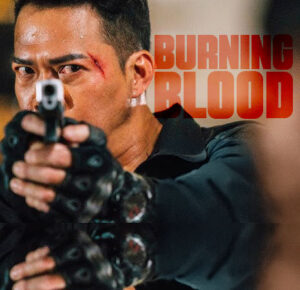
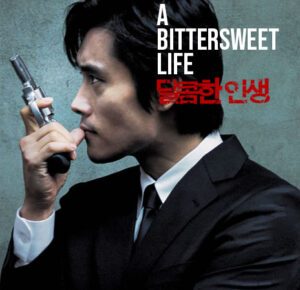





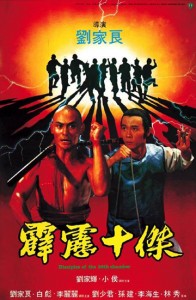
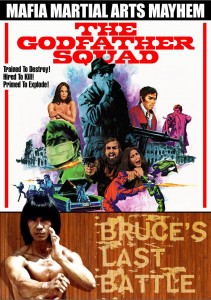
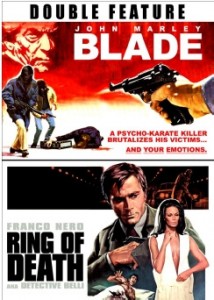
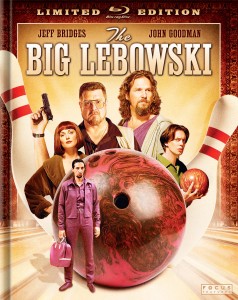

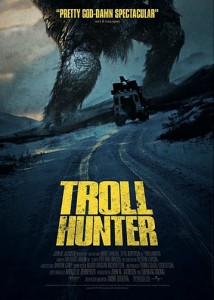
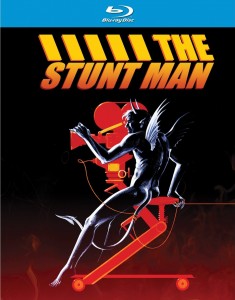
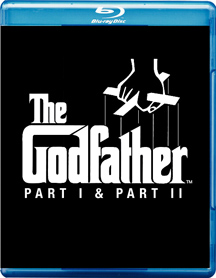
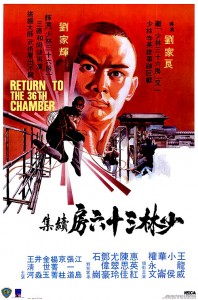

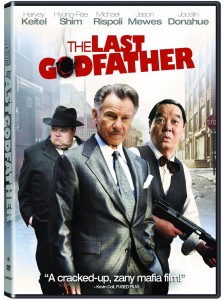
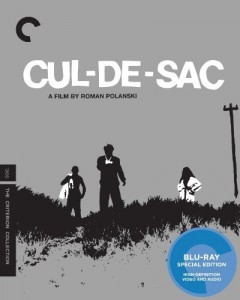
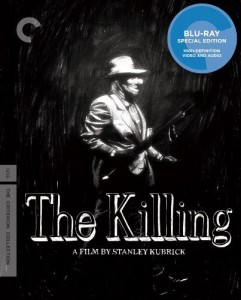



2 Comments